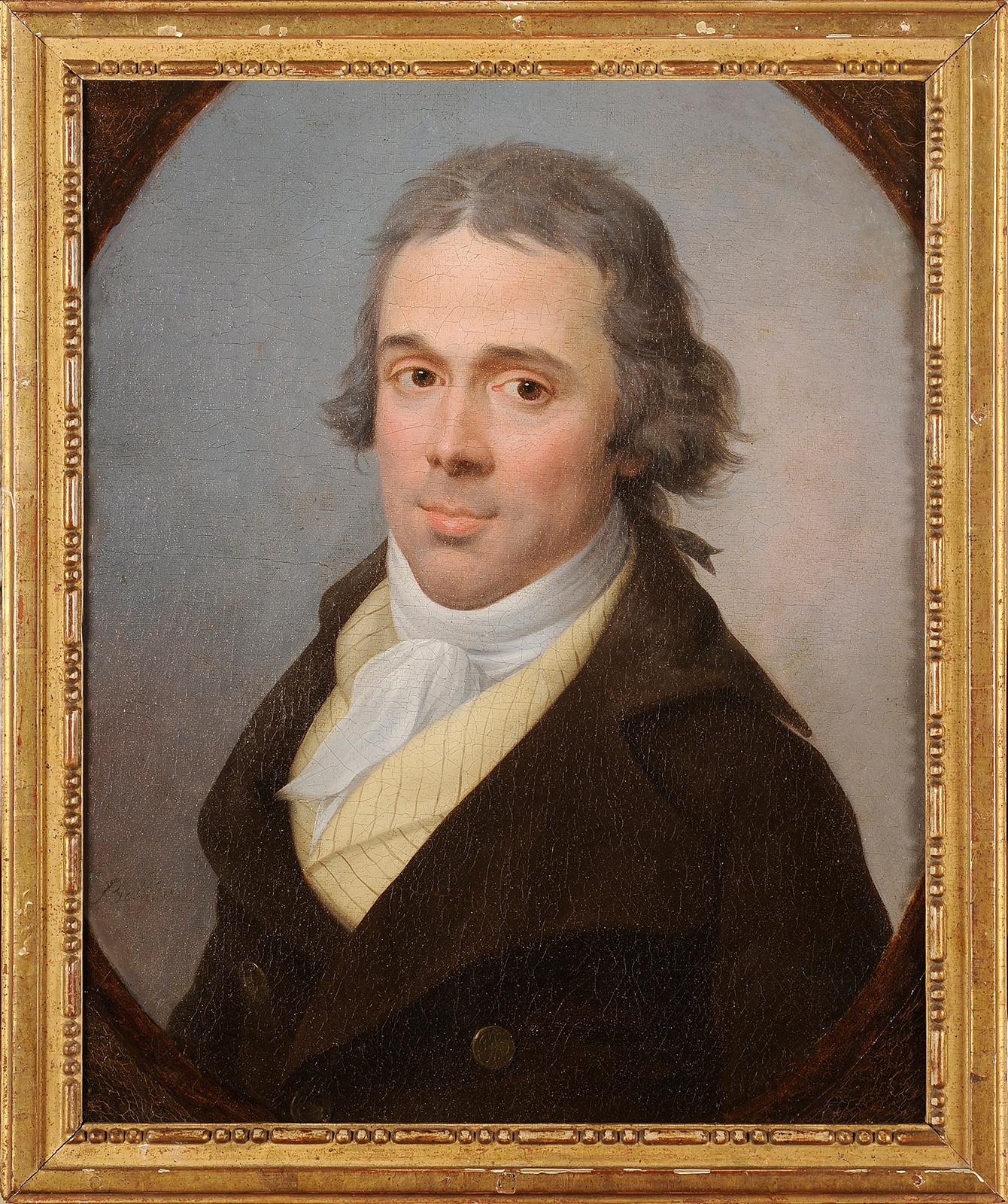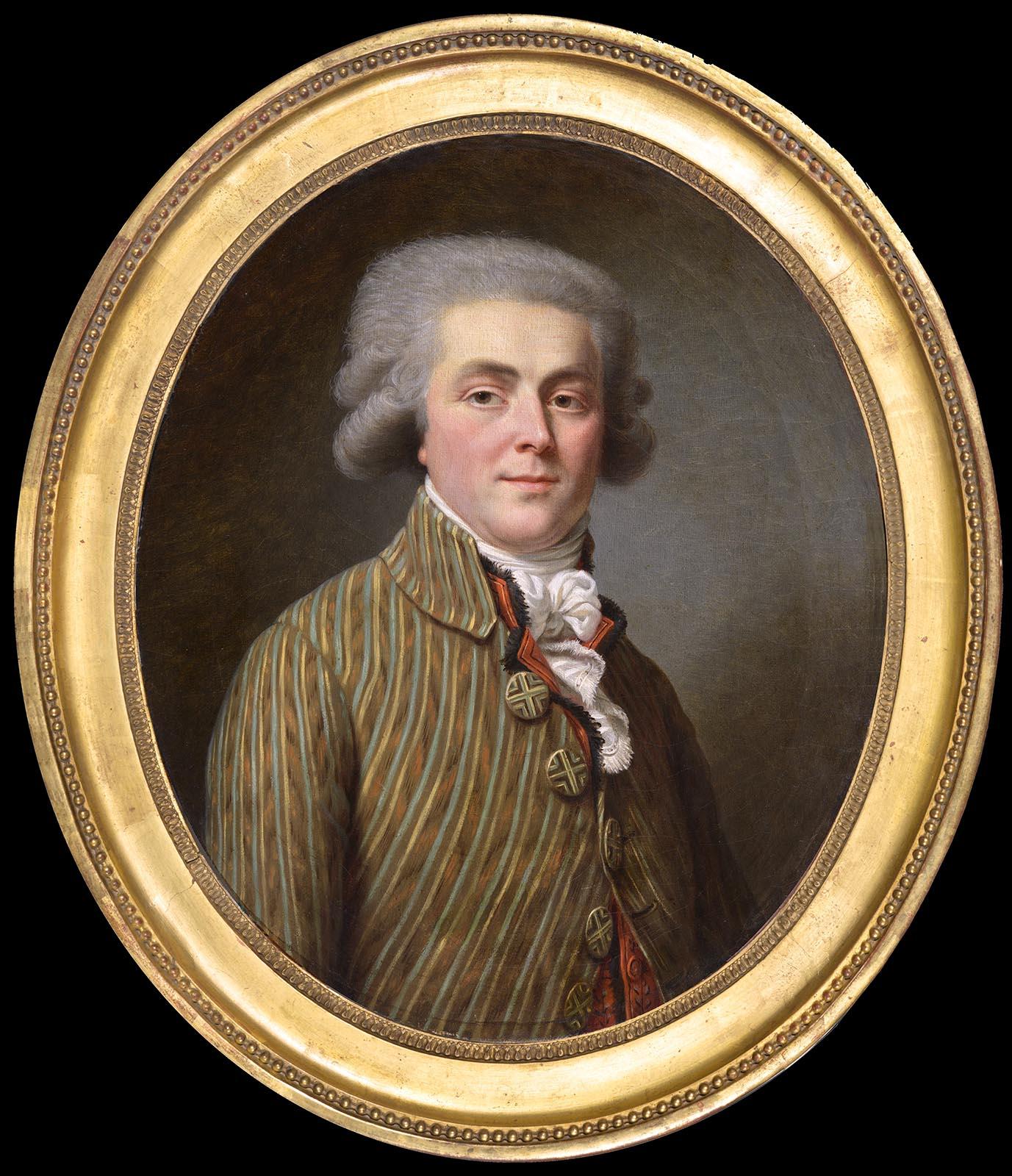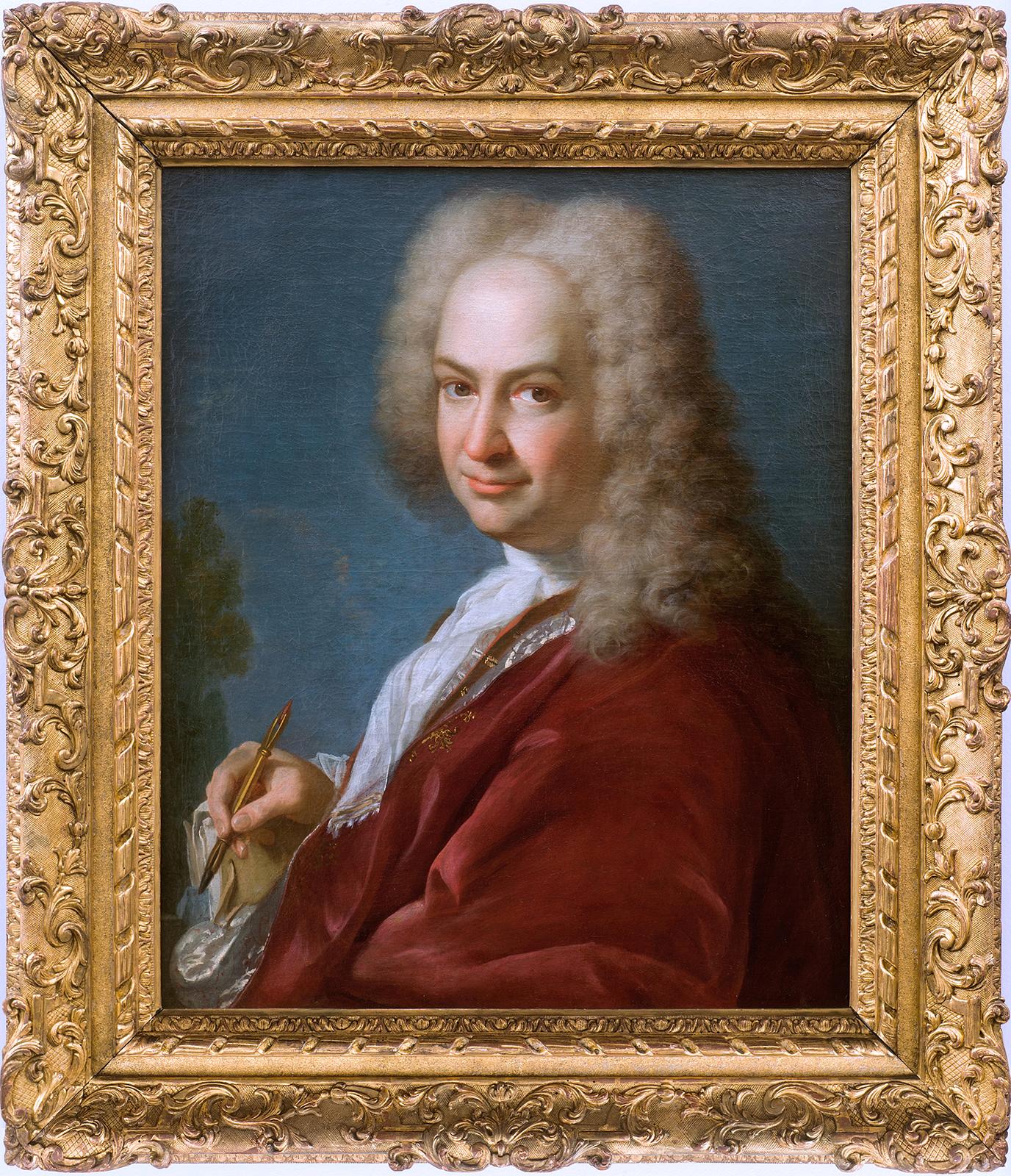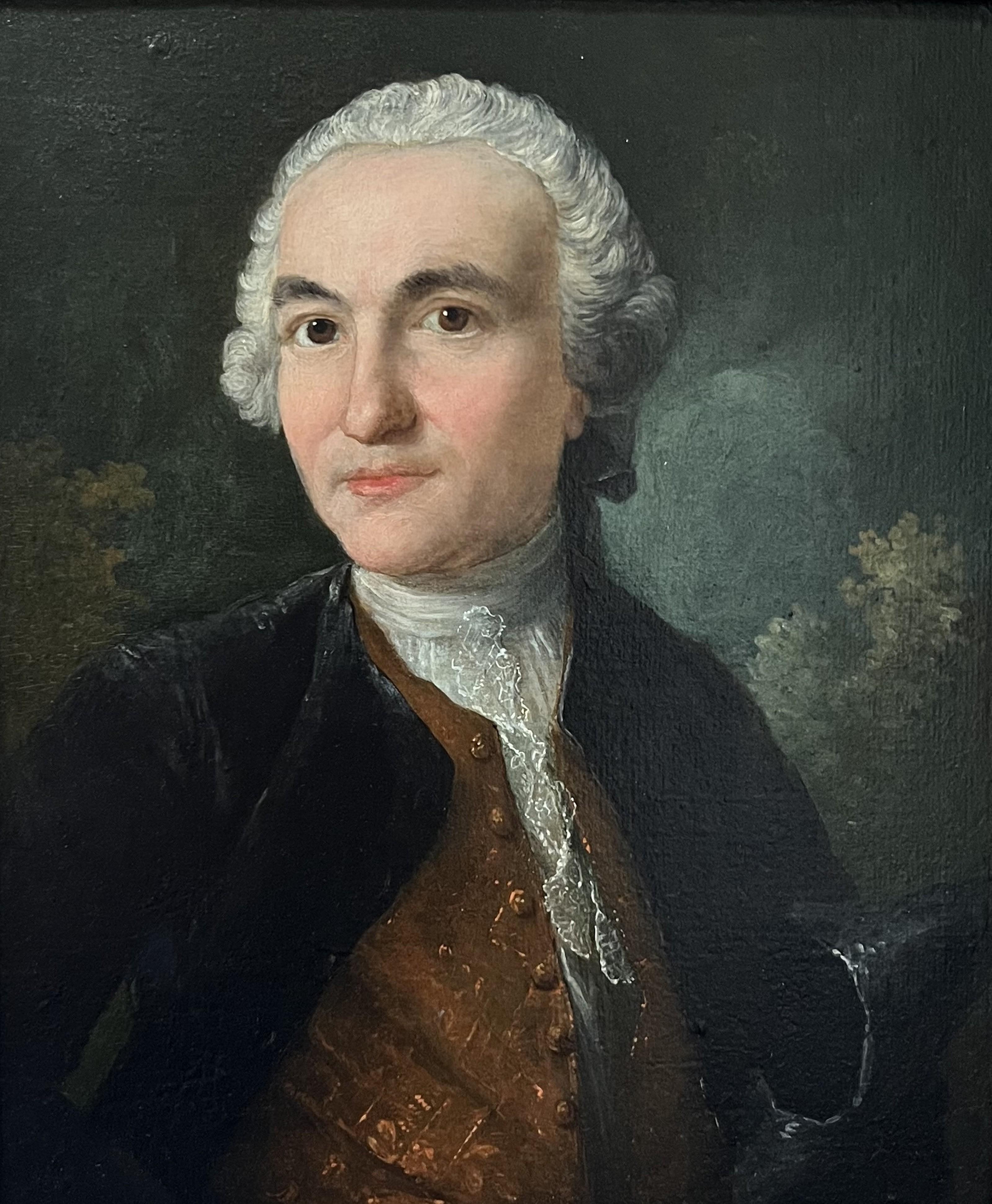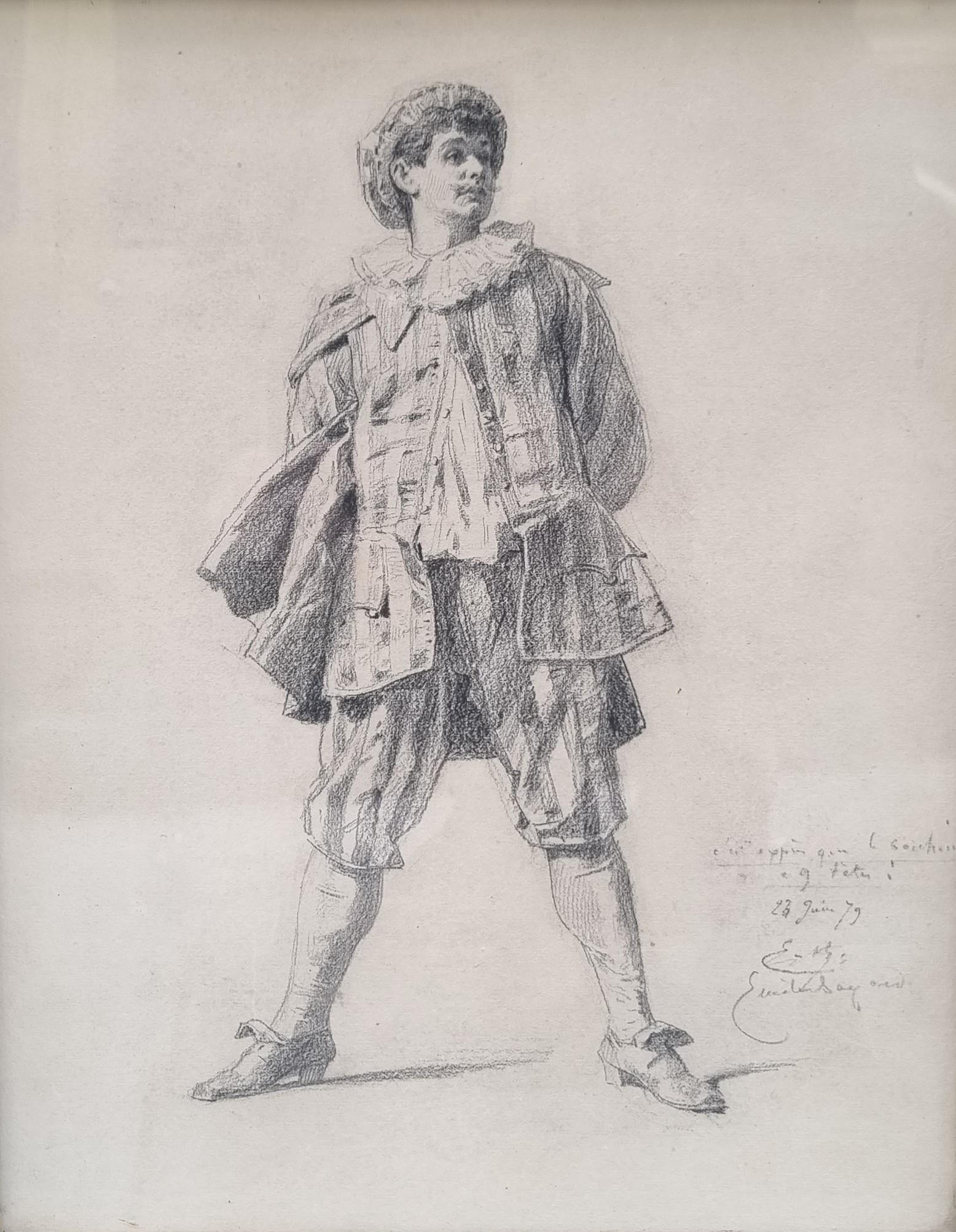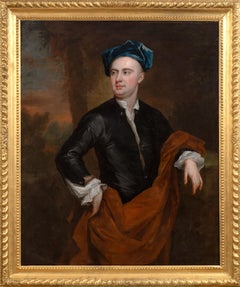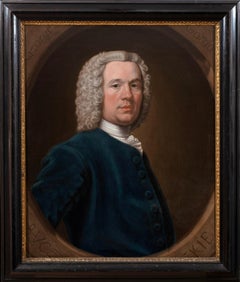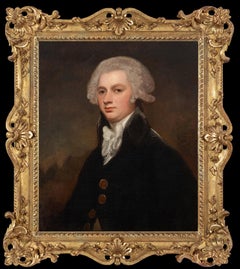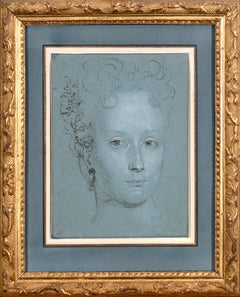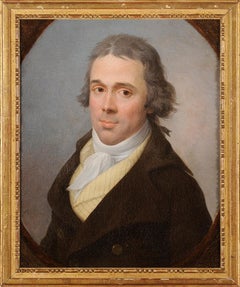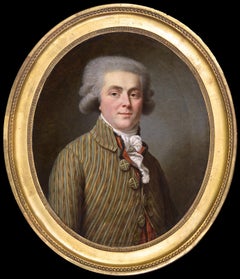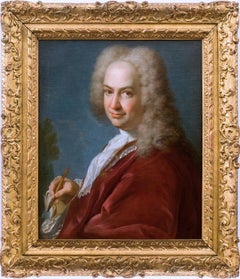Items Similar to Portrait tête d’expression portrait study of a gentleman
Want more images or videos?
Request additional images or videos from the seller
1 of 10
UnknownPortrait tête d’expression portrait study of a gentleman1780
1780
$10,570.57
£7,750
€9,006.19
CA$14,565.72
A$15,890.81
CHF 8,414.09
MX$190,417.19
NOK 107,158.10
SEK 97,988.13
DKK 67,247.85
About the Item
French Academic School, 18th century
Portrait tête d’expression study of a gentleman, c. 1780-90
Oil on canvas
46.1 x 35 cm.; (within frame) 57.5 x 46.6. cm.
Provenance:
Private Collection, Switzerland, until 2020;
Private Collection, United Kingdom.
Modelled with an almost metaphysical consideration, this skilled study is a strong example of the tête d’expression, an academic practice developed in France around 1750. A formal competition of the same name was established within the Académie Royale in 1759 (the concours de la tête d’expression), with the purpose of advancing pupils’ proficiency in expressing a breadth of human expression. Here, the subject is not the sitter himself, but the gentle contemplation which preoccupies him: pupils were required to negotiate between individualisation and generalisation. Here, the sitter’s head is tilted and with a distant, upward gaze; a deliberate white stroke moistens the corner of his eye, both animating the passion of the particular meditation, and giving life to its originator. Comparison with other tête d’expression dates the work to approximately 1780-90, which alongside the sitter’s hair ‒ being unpowered and not a wig ‒ confirms the work as that of the late 18th century. His dress further comprises a red coat with a dark collar and loosely tied cravat, which swells in a flurry of broad strokes beneath his chin. It is probable that the work was created by a pupil of the Académie, perhaps in submission to the Prix de Rome.
France’s academic hierarchy had traditionally prioritised history painting over portraiture, but a developing interest in physiognomy had begun to permeate the artistic output of the mid-18th century. Of only two stages of academic study which considered portraiture, the concours de la tête d’expression was required of each Prix de Rome aspirant. Designed to compensate for the limitations of traditional sculpture study, submissions typically codified varying facial structures or emotional expressions, and examined a given emotion (stubbornness, inspiration, melancholy, e.g.). Compelling within the viewer a degree of psychological interpretation, the exercise greatly expanded the significance of human expression, as ‘the source of life, movement and eloquence, the very soul of painting and the ultimate intellectual and spiritual challenge to the artist’ (Percival, p. 65). Leading proponents of the tête d’expression included Jean-Baptiste Greuze and Elisabeth-Louise Vigée Le Brun, whose studies routinely circulated the market and established the dominating style. Female sitters were typically preferred, whose enthusiastic ‘passions’ often possessed a certain eroticism for the works’ vastly male audience.
The present work is a confident example of the genre, and particularly close in handling to the work of Jacques-Augustin-Catherine Pajou (1766-1828) and Jean-Louis Laneuville (1756-1826). Formulating a distinctive technique of its own, areas of subtle blending are overlaid with more assertive brushwork, particularly the roundly shaped touches of colour which form the nostrils and right eye. The generous colouring of the upper face ‒ pink, yellow and blue pigments are married within one passage ‒ and shaved jawline contribute to a marvellous depth. More so, a subtle chiaroscuro effect shades the left half of the face, consisting only of an unfinished layer of two of translucent pigment. Naturally concerned with the face itself, less labour has been taken with the gentleman’s fashion, which is loosely though confidently worked. Indeed, the dark jacket collar appears translucent above a broader white shirt collar beneath. Possibly the natural result of pigment degradation, this might otherwise suggest the later reworking or addition of the garment ‒ perhaps a pentimenti of the artist, or the fashionable completion to a head study with the purpose of increasing the painting’s value on the market. The partially translucent tonal ground is lighted with dramatic emphasis around the sitter’s silhouette. Typical of such studies, this mode was favoured by François-André Vincent, Guillaume Voiriot, Antoine Vestier, and Alexander Roslin, among others.
I am most grateful to Laura Auricchio and Jean-Pierre Cuzin for their consideration of the present work.
Bibliography and further reading:
Sarah Betzer, Ingres and the Studio: Women, Painting, History (Pennsylvania, Pennsylvania State University Press, 2012)
Yuriko Jackall, Jean-Baptiste Greuze et Ses Têtes d’expression la Fortune d’un Genre (Paris: CTHS, 2022)
Melissa Percival, The Appearance of Character: Physiognomy and Facial Expression in Eighteenth-Century France (Leeds: W. S. Maney and Son Ltd., 1999)
- Creation Year:1780
- Dimensions:Height: 22.64 in (57.5 cm)Width: 18.35 in (46.6 cm)
- Medium:
- Movement & Style:
- Period:1780-1789
- Condition:The work is in good condition commensurate with age.
- Gallery Location:Henley-on-Thames, GB
- Reference Number:1stDibs: LU2820216026802
About the Seller
No Reviews Yet
Vetted Professional Seller
Every seller passes strict standards for authenticity and reliability
Established in 2024
1stDibs seller since 2024
- ShippingRetrieving quote...Shipping from: Henley-on-Thames, United Kingdom
- Return Policy
More From This Seller
View AllPortrait of an artistic Gentleman, c. 1720s
By John Vanderbank
Located in Henley-on-Thames, England
John Vanderbank (London 1694 - London 1739)
Portrait of an artistic Gentleman, c. 1720s
Three-quarter-length, wearing a turban
Oil on canvas
125.5 x 101.7 cm.; (within frame) 145.6...
Category
1720s Old Masters Portrait Paintings
Materials
Oil
Portrait of George Gordon, 7th Laird of Buckie (1707-1756)
By John Alexander
Located in Henley-on-Thames, England
John Alexander (Scottish, 1686-1766)
Portrait of George Gordon, 7th Laird of Buckie (Scottish, 1707-1756), c. 1743
Oil on canvas
In a carved ebonised frame, with gilded inner slight...
Category
1740s Old Masters Portrait Paintings
Materials
Oil
$8,183 Sale Price
20% Off
Portrait of a Gentleman, traditionally identified as Edward Addison, Esq., 1780s
By George Romney
Located in Henley-on-Thames, England
George Romney (1734-1802)
Portrait of a Gentleman, traditionally identified as Edward Addison, Esq., c.1780s
Oil on canvas
In a period carved and gilded swept frame
76.3 x 63.2 cm.; ...
Category
1780s Old Masters Portrait Paintings
Materials
Oil
Portrait study of a Lady, wearing precious stones and pearls
Located in Henley-on-Thames, England
Adriaen van der Werff (1659-1722) (attrib.)
Portrait study of a Lady, wearing precious stones and pearls
Black and white chalk, heightened with white, on blue paper
Inscribed verso, ...
Category
17th Century Rococo Portrait Drawings and Watercolors
Materials
Chalk
Portrait study of a female head, gazing downwards
Located in Henley-on-Thames, England
Giovanni Battista Vanni (1599-1660), c. 1629
Portrait study of a female head, gazing downwards
Black chalk and sanguine on laid paper, within partial red ink framing lines (inscribed...
Category
1620s Baroque Portrait Drawings and Watercolors
Materials
Chalk
Portrait of an Arab, with pyramids beyond
Located in Henley-on-Thames, England
Central European School, second half 19th century
Portrait of an Arab, with pyramids beyond
Oil on canvas
66.3 x 55.2 cm.; (within frame) 86.9 x 69.9 cm.
Unsigned
Provenance:
Privat...
Category
Mid-19th Century Portrait Paintings
Materials
Oil
You May Also Like
Men portrait
Located in BELEYMAS, FR
Jean François Marie Bellier
(Paris 1745 – Paris 1836)
Portrait of a Man
Oil on oval canvas laid flat
H. 45 cm; W. 55 cm
Signed on the left
Circa 1790
Jean François Marie Bellier occ...
Category
1790s French School Portrait Paintings
Materials
Canvas, Oil
Portrait of a man during French Revolution
Located in BELEYMAS, FR
Antoine VESTIER, attributed to
(Avallon, 1740 - Paris, 1824)
Portrait of a man under the Revolution
Oil on canvas
H. 46 cm; L. 37 cm
Circa 1793-95
This beautiful unsigned portrait i...
Category
1790s French School Figurative Paintings
Materials
Canvas, Oil
Self Portrait of Artist - French 18th century art Old Master oil painting
Located in Hagley, England
This simply superb French Old Master self portrait oil painting is attributed to portrait artist Alexis Grimou. Painted circa 1720 it is a bust length standing portrait of the artist...
Category
1720s Old Masters Portrait Paintings
Materials
Oil
$13,093 Sale Price
20% Off
Presumed artist self-portrait
Located in BELEYMAS, FR
Louis-Gabriel BLANCHET
(Versailles, 1701 – Rome, 1772)
Presumed self-portrait of the artist
Oil on canvas
H. 73 cm; W. 60 cm
Circa 1730
Originally presented in a Restoration period frame with a "Mignard" cartouche, this beautiful painting initially appeared to us as a work from northern Italy. However, it exuded a rather French form of refinement, suggesting that its artist may have assimilated a dual influence from both sides of the Alps.
We thank our colleague and friend Philippe Mendès for spontaneously and judiciously "bringing out" the name of Louis-Gabriel Blanchet, a Romanized French portraitist, whose spirit and stylistic characteristics we clearly recognize here.
Blanchet's "French" years, before his final departure for Rome in 1728, following his winning of the second Grand Prix for painting after Subleyras in 1727, are extremely poorly documented. His father, Gabriel, was valet to Blouin, himself Louis XIV's first valet at the time. According to Thierry Lefrançois, Blanchet was one of the few students of Nicolas Bertin (1667-1736), whose studio he is said to have joined in the early 1720s. At a baptism on March 24, 1724, where he was godfather, he is mentioned as a painter in the picture store of the Duke of Antin, the director of buildings between 1708 and 1736. At this time, he was probably already married to Jeanne Quément, with whom he had a daughter also named Jeanne, who would marry Nicolas Aviet, the son of a valet in the queen's wardrobe, in Versailles in 1738.
When Blanchet arrived in Rome in October 1728, he was accompanied by Subleyras, Trémolières, and Slodtz. He enjoyed the goodwill of Vleughels, the director of the Académie de France, which had been based at the Palazzo Mancini since 1725, even though the latter was not always kind to our resident. From 1732, he was under the protection of the Duke of Saint-Aignan when he took up his post as ambassador to Rome. Along with Slodtz and Subleyras, they formed a trio of friends, joined by Joseph Vernet shortly after his arrival in Rome in 1734. Slodtz and Blanchet, on the occasion of Subleyras's marriage in 1739, were there to attest that their friend was not bound by any marital commitment, and Blanchet was a witness at Vernet's wedding in 1745.
It is most likely from these early years in Rome that our portrait of the artist dates, the expression and turn of his face irresistibly reminiscent of a self-portrait. The still relatively youthful features may correspond to Blanchet's thirty-something years, and the fluffy wig was still fashionable at this time.
The painting fits well with the depiction of a young painter wanting to display both the beginnings of success and a certain simplicity or restraint. A slight smile expresses a form of assurance in this man with a gentle, sincere gaze and a face radiating a keen sense of wit. We find here the air of intimacy present in almost all of Blanchet's portraits, even those from the 1750s and 1760s, as well as an almost complicity with the viewer. The spirit of the painting is quite close to that of the presumed portrait of Bouchardon (painted around 1730) and the portrait of Pannini, painted in 1736, but it possesses a more natural quality, notably thanks to the absence of decorum. Our work exhibits the characteristics of Blanchet's paintings: elegance, luminosity (especially in the whites), vibrant and refined colors (here, the harmony of the garnet of the garment and the slate blue of the background, whose uniformity is tempered by a very sketched landscape and a grove of greenery), light complexions, rather rosy cheekbones, often full lips, and rather tight framing.
According to the Academy's rules, Blanchet's stay should have ended in the spring of 1732, but, for reasons unknown, he remained in the Eternal City until his death, as did his friend Subleyras, with whom he shared accommodation until the late 1730s. The latter regularly called upon him to collaborate on his paintings, such as The Meal at Simon's. Through Saint-Aignan's intervention, Blanchet was employed in the late 1730s by the Stuart princely family, then exiled in Italy. He notably produced copies (now lost) after Liotard of the portraits of Charles Edward and Henry Benedict, the sons of James III Stuart. The latter also commissioned three other portraits (now in the National Portrait Gallery in London), whose more formal character contrasts with the intimate spirit of Blanchet's portraits. Blanchet frequented English painters, such as the landscape painter Richard Wilson, and studied with the Scottish portraitist Katherine Read...
Category
1730s French School Portrait Paintings
Materials
Oil, Canvas
French School 18th century, Portrait of a gentleman, oil
Located in Paris, FR
French School 18th Century
Portrait of a gentleman holding his hat
Oil on paper transferred on wood panel
34 x 27 cm
In a beautiful vintage wood frame with some lacks in the mould, ...
Category
1760s Old Masters Portrait Paintings
Materials
Oil
SCAPIN MOLIERE MEZZETIN French Drawing Portrait French actor BARET 19th
Located in PARIS, FR
Emile BAYARD
La Ferté-sous-Jouarre, 1837 – Cairo, 1891
Scapin or the Mezzetin (Portrait of the young Charles Baret in 1879)
Black chalk drawing
34 x 28 cm (43 x 36 cm with frame)
Sig...
Category
1870s French School Portrait Paintings
Materials
Carbon Pencil
More Ways To Browse
Antique Gentleman
Antique Exercise
Antique White Shirt
Le Brun
Antique Cravat
Antique Tete A Tete
Antique Shirt Collars
Jean Baptiste Greuze
Elisabeth Vigee Le Brun
Francois Guillaume
Alexander Roslin
Bret Reilly
British Officer Painting
Caspar Netscher
Charles Andre Van Loo
Duke Of Somerset
Edward Masters Painting
French Painter Bernard
